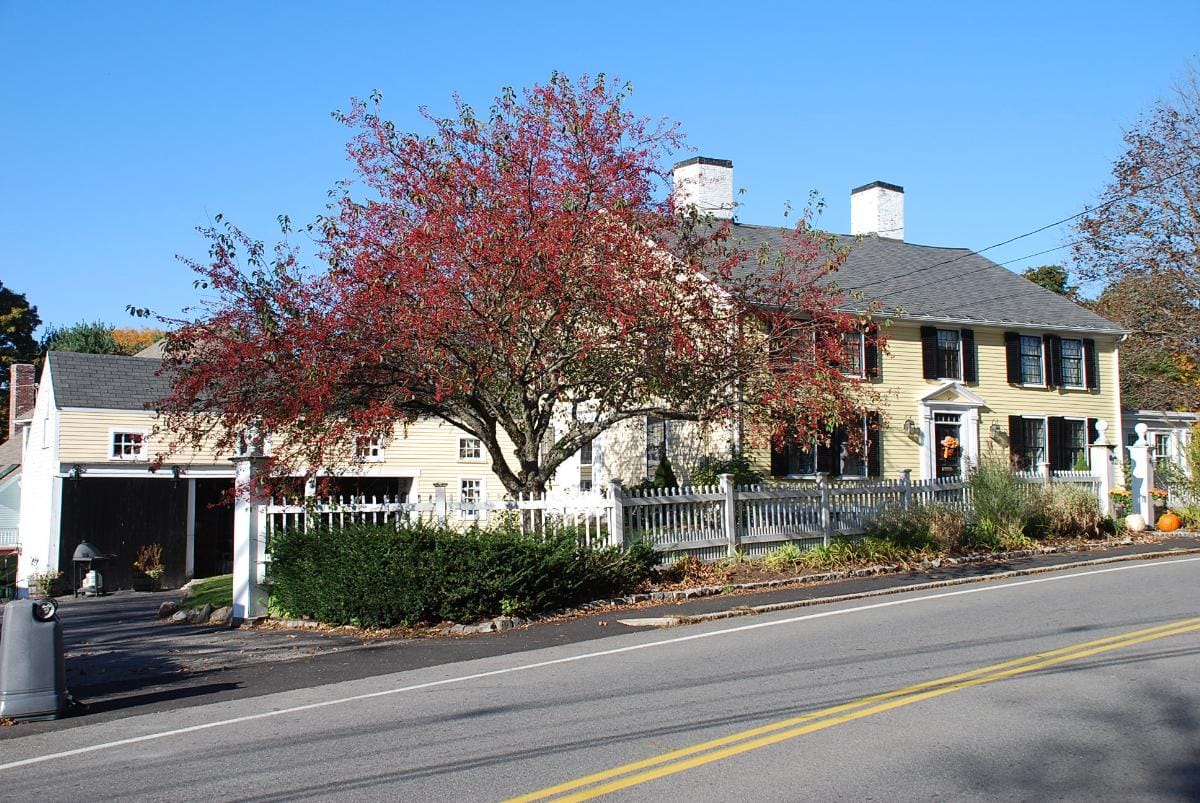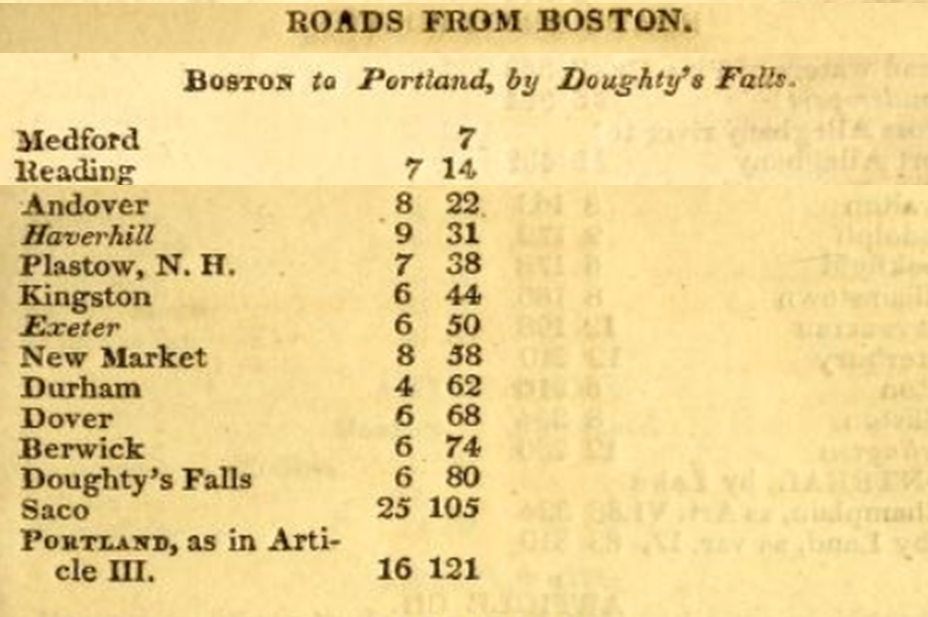Chandler - Abbott Tavern?

In the upcoming entries, I'll be diving into a handful of taverns that remain shrouded in mystery. These places lack thorough documentation and understanding for various reasons. Some were short-lived, others didn't bother filing for a license, and a few simply didn't witness anything noteworthy. Yet, these taverns embody the essence of everyday tavern life.
One such establishment is the Chandler-Abbott House. Situated along the Way to Salem-Tewksbury, this house dates back to the late 18th century and was strategically positioned along an existing stagecoach road, serving as a tavern. However, the identity of its owner and the precise timeline remain elusive, adding an intriguing layer of mystery and speculation to this forgotten tavern.
A quick note for readers: The Chandlers had a penchant for recycling names across generations, which often leads to confusion. When discussing figures like William Chandler, the owner of the Horseshoe Tavern, it's important to note that there were multiple individuals with the same name within the family tree. To maintain clarity, I'll be referring to them by their generational number. For instance, the first William Chandler from England, who arrived in 1637, will be denoted as William1. His children—Thomas, Hannah, John, and another William—are collectively referred to as 2. I hope this approach doesn't detract from the story but rather aids in understanding the intricate dynamics within the Chandler family.
The Way to Salem-Tewksbury Road
Thomas Chandler2 relocated to this neighborhood around 1662 to start his ironworks venture. He was among the first to move out of Old Andover Center, where house lots had been clustered since the early 1640s. Thomas thrived in his endeavors and played various roles in Andover, including serving as a selectman and becoming one of the town's largest taxpayers.
By the 1700s, the land had been passed down through generations of Chandlers, evolving into numerous farming lots. Thomas' grandson, John4 Chandler (b. 1680, d. 1741), now owned a farm on both sides of the Salem-Tewksbury Road. It's likely that Nathan6, along with his family, resided on his grandfather's farm and perhaps even constructed our tavern.
John4 Chandler had a house and barn on the property. The current barn, built in the early English style known as first-period or pre-1720, remains standing with its impressive gunstock posts. However, questions linger about the house.
Who erected the substantial house and when?
John4 passed away in 1741, but the style of the existing home suggests a later construction in the 18th century. Nathan6 Chandler (b.1730, d. 1786) and his wife, Phebe Abbott, raised nine children on this West Andover farm. They likely married in 1753, after John's demise. It's reasonable to speculate that Nathan6 commissioned the construction of the house sometime after his marriage to Phebe and before his death in 1786. His uncle, Joshua5 Chandler, a skilled housewright credited with building the South Parish Meetinghouse, is a probable candidate for the builder.
With Joshua5's expertise and the presence of the impressive barn, Nathan6 likely had a sizable house constructed near the barn and close to the Salem-Tewksbury Road. The older structure belonging to Grandpa John may have been repurposed for lumber or incorporated into the new building. Such practices were common, with older structures often attached to the rear of newer constructions. Judging by the house's features, we can deduce that it was likely built after Nathan6 and Phebe's marriage, probably by the 1760s. However, this doesn't necessarily confirm its status as a tavern or stagecoach stop at that time.
This spacious two-story home boasts two chimney stacks. Notably, the front room to the west of the entrance features dual entrances—one facing the front and the other leading to the side, connecting to the carriage shed and barn. This layout mirrors several other taverns in town, suggesting its potential as a tavern and stagecoach stop. But the lingering question remains: when did it transition into a tavern?

Stagecoaches grow significantly during the late 1700’s
During the early 1700s, roads saw significant improvements, paving the way for the emergence of postriders who connected each town through the tavern network. By 1775, a post rider was linking Boston and Haverhill, coinciding with the establishment of a post office in Haverhill itself. This post rider held a prominent place in both the public eye and his own. Picture this: darting around on horseback, carrying important messages "post-haste," equipped with saddlebags and a trusty horn to signal his approach. Interestingly, letters intended for Andover residents would often find themselves advertised in Haverhill's post office, prompting Andoverites to make a journey for mail pickup.
Stagecoaches were slow to gain traction. By 1773, Thomas Beals was operating "Mail Stage Carriages between Boston and Providence." These journeys could be grueling, particularly in winter. For context, in March 1716, it took a staggering nine days for a single trip between Salem and Portsmouth, covering a mere 40 miles. In 1781, a stagecoach route from Boston to Portsmouth (and onwards to Portland) passed through Andover and Haverhill, venturing into New Hampshire via Exeter before reaching Portsmouth. Given this north-south route, it's unlikely that our tavern was the sole stop in Andover; instead, it's more probable that it was the Ames Tavern in Elm Square or perhaps the Abbott tavern on Elm Street.
When Isaac Abbott applied for his license in 1776, he cited the frequent visits of stagecoach travelers seeking refreshments as justification. Notably, the Abbotts and Chandlers have a history of marriage and proximity, beginning with George1 Abbott marrying Hannah2 Chandler in 1646. Additionally, the Poore Tavern, another north-south establishment near the crossing over the Merrimack River into Haverhill, served as a stagecoach stop and inn, posing competition for another stagecoach stop. However, this doesn’t discount the possibility of it being a tavern.
As the Abbott petition underscores, travelers would stop in for a beverage or food, and the owner would charge for any consumed items. Given the Chandler house's proximity to the road and its location along an east-west route, it's highly likely that travelers would frequent it. Was it an official tavern? That remains uncertain. When Nathan6 passed away in 1786, his son Nathan7 inherited the home, eventually selling it to his second cousin once removed, Zebadiah7 Chandler, in 1793. Zebadiah paid $25 pounds for five parcels, the primary one being 27 acres with buildings—the very lot our tavern sits on.
The Chandlers had occupied this land for five generations and would continue to do so for another before it was finally sold to Herman Abbott in 1807. Herman Abbott's Tavern tied into the family trade alongside a burgeoning industry. Herman, a third-generation Abbott in Andover, had familial ties to tavern ownership, marrying a Chandler, hosting George Washington in 1789. Benjamin Ames, another tavern owner, also married into the Chandler family. Through generations, the Abbotts and Chandlers embraced the tavern trade.
Forgotten Tavern
The late 1700s to the early 1800s marked the heyday of stagecoach travel. With a house situated so close to the road and bustling with oncoming travelers, Abbott hoped to capitalize on the flourishing stagecoach business along this well-traveled route. By 1835, the advent of railroads connecting Boston to Lowell (north), Providence (south), and Worcester (west) rendered many taverns obsolete, potentially impacting the Abbott Tavern. However, being positioned along an east-west road likely ensured continued stagecoach service for some time beyond the 1830s.
Any tavern along the route ensured that food was readily available for passengers, along with the option to enjoy a drink, whether cider or beer, and warm up near the fire—a welcomed comfort. As Frederick Currier recounted in his 1897 history of life in Fitchburg, Massachusetts, "An hour before the stagecoach was due," the tavern keeper could be found in the taproom, preparing bottles of liquor and setting glasses in single file. Simultaneously, he would urge the kitchen to "make haste with the dinner or supper, of which there were already premonitory odors of the most appetizing kind." When the stagecoach arrived, the tavern keeper "hastened to the porch and stood there with a smiling face, the picture of welcome as the coach rounded up and the driver threw his reins to the waiting hostlers."
The Chandler-Abbott house, positioned along the road, served as an ideal location for the stagecoach and the multitude of travelers passing through. Unfortunately, records for this tavern and stagecoach stop are sketchy, and there are no formal records detailing its actual timeframe as a tavern. Nonetheless, the house's strategic placement and welcoming atmosphere likely attracted travelers who would stop in for a drink. Any additional information has been lost or forgotten, adding another chapter to the story of a Forgotten Tavern.
Sources
Ancestry.com for numerous historical records on the Chandlers.
Andover Historic Preservation Site, Welcome to the Andover Historic Preservation Web Site | Andover Historic Preservation (mhl.org).
Comments ()